Title : Diagnostic values of FeNO and correlation between FeNO and FEV1 in asthma patients
Abstract:
Background: The absence of airflow limitation in spirometry is common in asthma. The methacholine challenge test (MCT) is often necessary for the diagnosis of asthma, but it is usually performed in secondary or tertiary hospitals. Fraction exhaled nitric oxide (FeNO) is an eosinophilic airway inflammation marker, and its measurement is simple, rapid, convenient, and can be easily performed in primary care. We aimed to investigate the sensitivity and specificity of FeNO, allergosorbent test, and serum immunoglobulin E (IgE) level in the diagnosis of asthma and we also investigate the correlation between FeNO and FEV1 in asthma patients.
Patients and Methods: In this retrospective analysis, we analyzed 98 asthma patients who were diagnosed with MCT and treated between January 1, 2022, and December 31, 2024. All patients underwent FeNO measurement, allergosorbent test, and serum IgE level before MCT to aid in the diagnosis and management of asthma. We evaluated the sensitivity and specificity of the markers, which included elevated FeNO (> 25 ppb), positive allergosorbent test (at least one allergen is positive), and high serum IgE level (> 100 IU/mL), in the diagnosis of asthma. We also investigate the correlation between FeNO and FEV1.
Results: In MCT positive asthma patients, combination of elevated FeNO and positive allergosorbent test, the sensitivity and specificity of asthma diagnosis were 0.57 and 0.85, respectively. In MCT positive asthma patients with elevated FeNO and high serum IgE level, the sensitivity and specificity were 0.46 and 0.79, respectively. In MCT positive asthma patients with elevated FeNO, positive allergosorbent test, and high serum IgE level, the sensitivity and specificity were 0.48 and 0.91, respectively. There was no significant correlation between FeNO and FEV1, however, a significant negative correlation was found between the changes in FeNO and the changes in FEV1 during follow-up tests (r=0.19; p=0.02).
Conclusions: The combination of FeNO, allergosorbent test, and serum IgE level may be useful diagnostic tools in patients with asthma. There is a tendency for FEV1 to increase when FeNO decrease. These results may indicate that monitoring FeNO can help predict changes in FEV1 in asthma management and this correlation could be useful in assessing the condition of asthma patients and determining treatment strategies.



